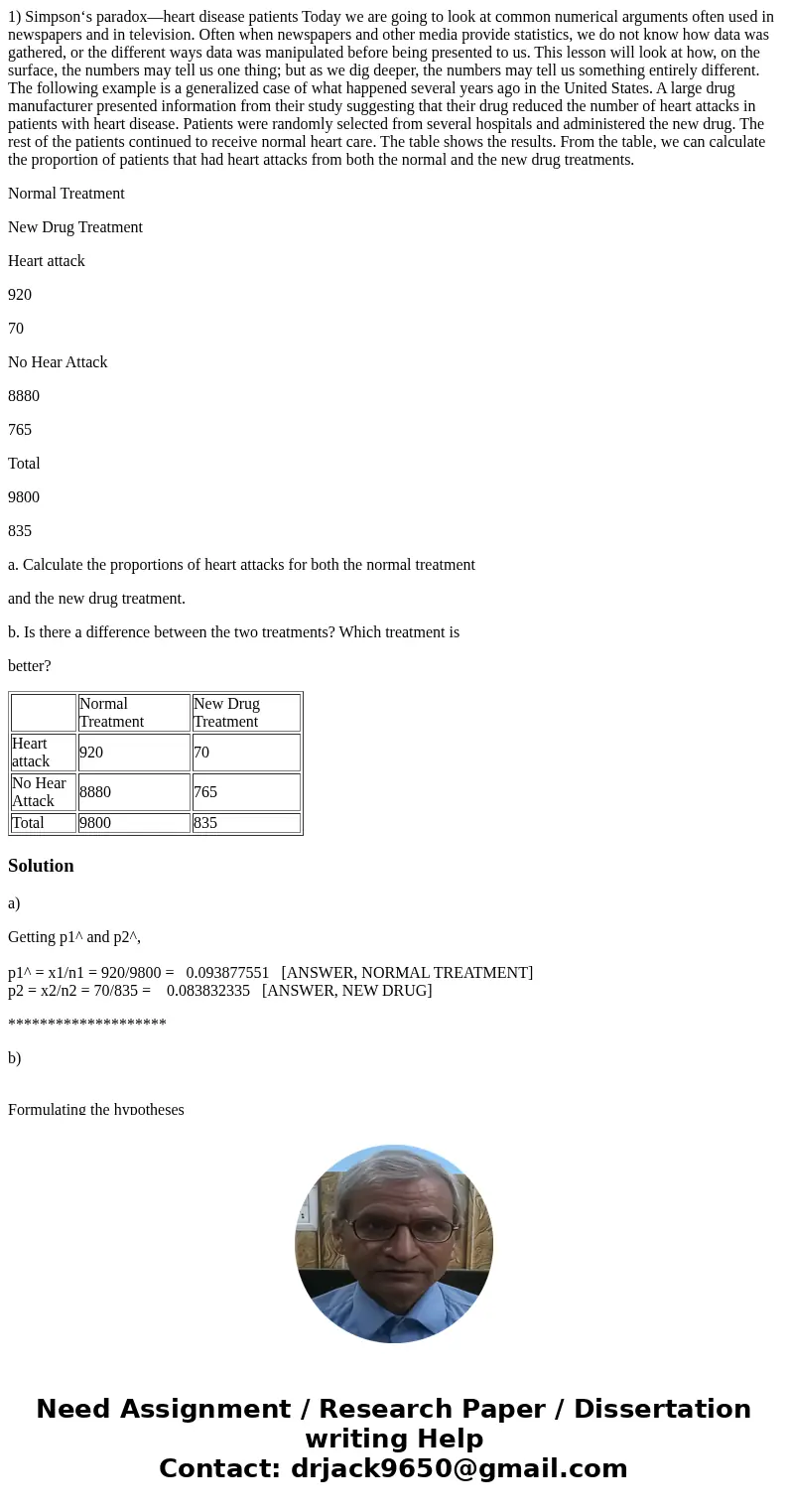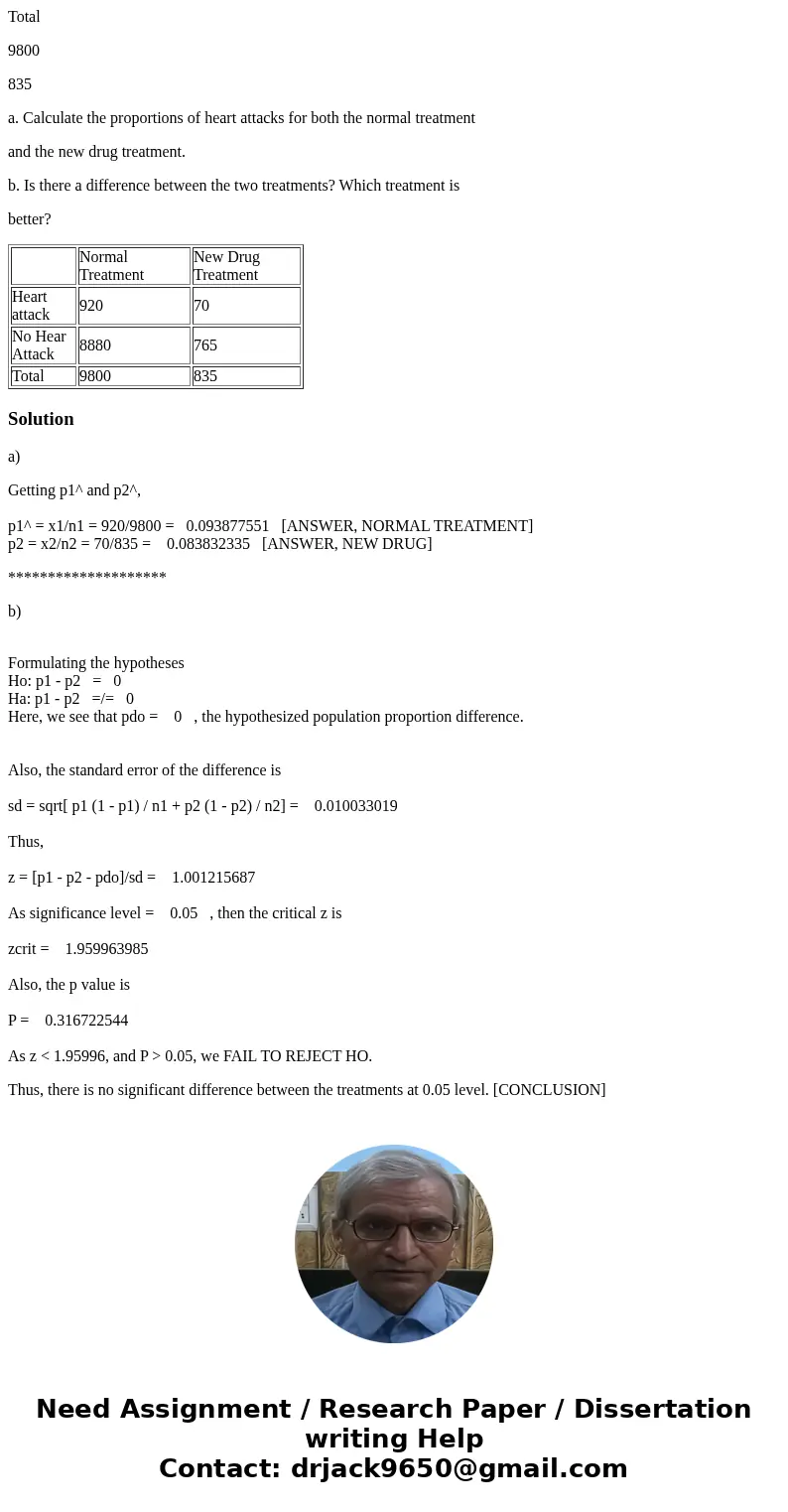1 Simpsons paradoxheart disease patients Today we are going
1) Simpson‘s paradox—heart disease patients Today we are going to look at common numerical arguments often used in newspapers and in television. Often when newspapers and other media provide statistics, we do not know how data was gathered, or the different ways data was manipulated before being presented to us. This lesson will look at how, on the surface, the numbers may tell us one thing; but as we dig deeper, the numbers may tell us something entirely different. The following example is a generalized case of what happened several years ago in the United States. A large drug manufacturer presented information from their study suggesting that their drug reduced the number of heart attacks in patients with heart disease. Patients were randomly selected from several hospitals and administered the new drug. The rest of the patients continued to receive normal heart care. The table shows the results. From the table, we can calculate the proportion of patients that had heart attacks from both the normal and the new drug treatments.
Normal Treatment
New Drug Treatment
Heart attack
920
70
No Hear Attack
8880
765
Total
9800
835
a. Calculate the proportions of heart attacks for both the normal treatment
and the new drug treatment.
b. Is there a difference between the two treatments? Which treatment is
better?
| Normal Treatment | New Drug Treatment | |
| Heart attack | 920 | 70 |
| No Hear Attack | 8880 | 765 |
| Total | 9800 | 835 |
Solution
a)
Getting p1^ and p2^,
p1^ = x1/n1 = 920/9800 = 0.093877551 [ANSWER, NORMAL TREATMENT]
p2 = x2/n2 = 70/835 = 0.083832335 [ANSWER, NEW DRUG]
********************
b)
Formulating the hypotheses
Ho: p1 - p2 = 0
Ha: p1 - p2 =/= 0
Here, we see that pdo = 0 , the hypothesized population proportion difference.
Also, the standard error of the difference is
sd = sqrt[ p1 (1 - p1) / n1 + p2 (1 - p2) / n2] = 0.010033019
Thus,
z = [p1 - p2 - pdo]/sd = 1.001215687
As significance level = 0.05 , then the critical z is
zcrit = 1.959963985
Also, the p value is
P = 0.316722544
As z < 1.95996, and P > 0.05, we FAIL TO REJECT HO.
Thus, there is no significant difference between the treatments at 0.05 level. [CONCLUSION]


 Homework Sourse
Homework Sourse